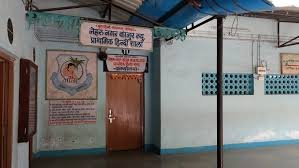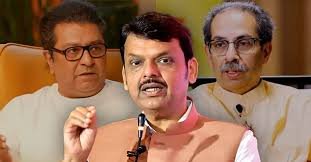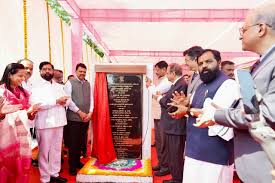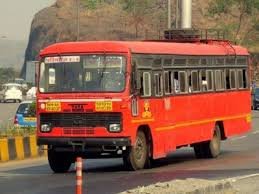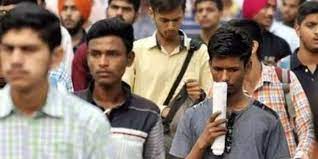
Unemployment increased among educated youth in the country!
-The share of educated youth among unemployed increased to 65.7 percent
-International Labor Organization report released amid election heat
New Delhi. Unemployment has increased among educated youth in India. In the last 22 years, the number of unemployed youth with secondary education or above has increased. In 2000, the share of educated youth among all unemployed was 54.2 percent, which increased to 65.7 percent in 2022. Among educated (secondary level or above) unemployed youth, the share of women (76.7 percent) is higher than that of men (62.2 percent).
Various aspects of unemployment in India can be understood from the India Employment Report 2024 released by the International Labor Organization (ILO) and the Institute of Human Development (IHD). This report, which came amid the heated election environment, shows that the problem of unemployment in India is increasing rapidly among the youth, especially the educated youth and women in urban areas.
youth wandering in search of work
83 percent of the total unemployed people looking for work in India are youth. About 90% of workers remain engaged in informal work, while the share of regular work, which had been rising steadily since 2000, has declined since 2018.
The report said that only a small percentage of the total people in the work force are covered under social security. What is worse, contractualization has increased, with only a small percentage of regular employees covered by long-term contracts, while India is currently experiencing a demographic dividend.
The truth of improvement in employment rate
The report shows that the workforce participation rate has improved. Employment rate has increased. But behind these stark statistics lie some smaller facts, such as youth employment being of poorer quality than adult employment, stagnant or declining earnings as well as a higher proportion of unpaid family work among youth compared to adults. Moreover, women are predominantly engaged in self-employment and unpaid family work.
The report says that to increase the quality of jobs, India should explore and invest in some such jobs and make laws and regulations for them. There is a possibility of youth getting more jobs through such works. For example, caring work, digital field etc.
Given the increasing rate of urban growth and the potential for people to migrate to cities in India, the report says it is important to develop urban development plans to support migrants, women and poor youth. , in which all people can be included.
Dalits and tribals are more in low paid temporary jobs
Highlighting growing social inequalities, the report said that despite affirmative action (reservation, etc.) and targeted policies, Scheduled Castes and Scheduled Tribes still lag behind in terms of access to better jobs. Due to their economic needs, people belonging to Scheduled Castes and Scheduled Tribes participate in work, but they are more engaged in low paid temporary casual wage work and informal employment. Despite improvements in educational levels across all groups, hierarchies persist within social groups, the report said.
Don't the youth have skills?
The report said that the youth do not have the skills to work. 75% of youth are unable to send emails with attachments, 60% are unable to copy and paste files, and 90% are unable to enter math formulas into a spreadsheet.
,
-The share of educated youth among unemployed increased to 65.7 percent
-International Labor Organization report released amid election heat
New Delhi. Unemployment has increased among educated youth in India. In the last 22 years, the number of unemployed youth with secondary education or above has increased. In 2000, the share of educated youth among all unemployed was 54.2 percent, which increased to 65.7 percent in 2022. Among educated (secondary level or above) unemployed youth, the share of women (76.7 percent) is higher than that of men (62.2 percent).
Various aspects of unemployment in India can be understood from the India Employment Report 2024 released by the International Labor Organization (ILO) and the Institute of Human Development (IHD). This report, which came amid the heated election environment, shows that the problem of unemployment in India is increasing rapidly among the youth, especially the educated youth and women in urban areas.
youth wandering in search of work
83 percent of the total unemployed people looking for work in India are youth. About 90% of workers remain engaged in informal work, while the share of regular work, which had been rising steadily since 2000, has declined since 2018.
The report said that only a small percentage of the total people in the work force are covered under social security. What is worse, contractualization has increased, with only a small percentage of regular employees covered by long-term contracts, while India is currently experiencing a demographic dividend.
The truth of improvement in employment rate
The report shows that the workforce participation rate has improved. Employment rate has increased. But behind these stark statistics lie some smaller facts, such as youth employment being of poorer quality than adult employment, stagnant or declining earnings as well as a higher proportion of unpaid family work among youth compared to adults. Moreover, women are predominantly engaged in self-employment and unpaid family work.
The report says that to increase the quality of jobs, India should explore and invest in some such jobs and make laws and regulations for them. There is a possibility of youth getting more jobs through such works. For example, caring work, digital field etc.
Given the increasing rate of urban growth and the potential for people to migrate to cities in India, the report says it is important to develop urban development plans to support migrants, women and poor youth. , in which all people can be included.
Dalits and tribals are more in low paid temporary jobs
Highlighting growing social inequalities, the report said that despite affirmative action (reservation, etc.) and targeted policies, Scheduled Castes and Scheduled Tribes still lag behind in terms of access to better jobs. Due to their economic needs, people belonging to Scheduled Castes and Scheduled Tribes participate in work, but they are more engaged in low paid temporary casual wage work and informal employment. Despite improvements in educational levels across all groups, hierarchies persist within social groups, the report said.
Don't the youth have skills?
The report said that the youth do not have the skills to work. 75% of youth are unable to send emails with attachments, 60% are unable to copy and paste files, and 90% are unable to enter math formulas into a spreadsheet.
,
-International Labor Organization report released amid election heat
New Delhi. Unemployment has increased among educated youth in India. In the last 22 years, the number of unemployed youth with secondary education or above has increased. In 2000, the share of educated youth among all unemployed was 54.2 percent, which increased to 65.7 percent in 2022. Among educated (secondary level or above) unemployed youth, the share of women (76.7 percent) is higher than that of men (62.2 percent).
Various aspects of unemployment in India can be understood from the India Employment Report 2024 released by the International Labor Organization (ILO) and the Institute of Human Development (IHD). This report, which came amid the heated election environment, shows that the problem of unemployment in India is increasing rapidly among the youth, especially the educated youth and women in urban areas.
youth wandering in search of work
83 percent of the total unemployed people looking for work in India are youth. About 90% of workers remain engaged in informal work, while the share of regular work, which had been rising steadily since 2000, has declined since 2018.
The report said that only a small percentage of the total people in the work force are covered under social security. What is worse, contractualization has increased, with only a small percentage of regular employees covered by long-term contracts, while India is currently experiencing a demographic dividend.
The truth of improvement in employment rate
The report shows that the workforce participation rate has improved. Employment rate has increased. But behind these stark statistics lie some smaller facts, such as youth employment being of poorer quality than adult employment, stagnant or declining earnings as well as a higher proportion of unpaid family work among youth compared to adults. Moreover, women are predominantly engaged in self-employment and unpaid family work.
The report says that to increase the quality of jobs, India should explore and invest in some such jobs and make laws and regulations for them. There is a possibility of youth getting more jobs through such works. For example, caring work, digital field etc.
Given the increasing rate of urban growth and the potential for people to migrate to cities in India, the report says it is important to develop urban development plans to support migrants, women and poor youth. , in which all people can be included.
Dalits and tribals are more in low paid temporary jobs
Highlighting growing social inequalities, the report said that despite affirmative action (reservation, etc.) and targeted policies, Scheduled Castes and Scheduled Tribes still lag behind in terms of access to better jobs. Due to their economic needs, people belonging to Scheduled Castes and Scheduled Tribes participate in work, but they are more engaged in low paid temporary casual wage work and informal employment. Despite improvements in educational levels across all groups, hierarchies persist within social groups, the report said.
Don't the youth have skills?
The report said that the youth do not have the skills to work. 75% of youth are unable to send emails with attachments, 60% are unable to copy and paste files, and 90% are unable to enter math formulas into a spreadsheet.
,

.jpg)








